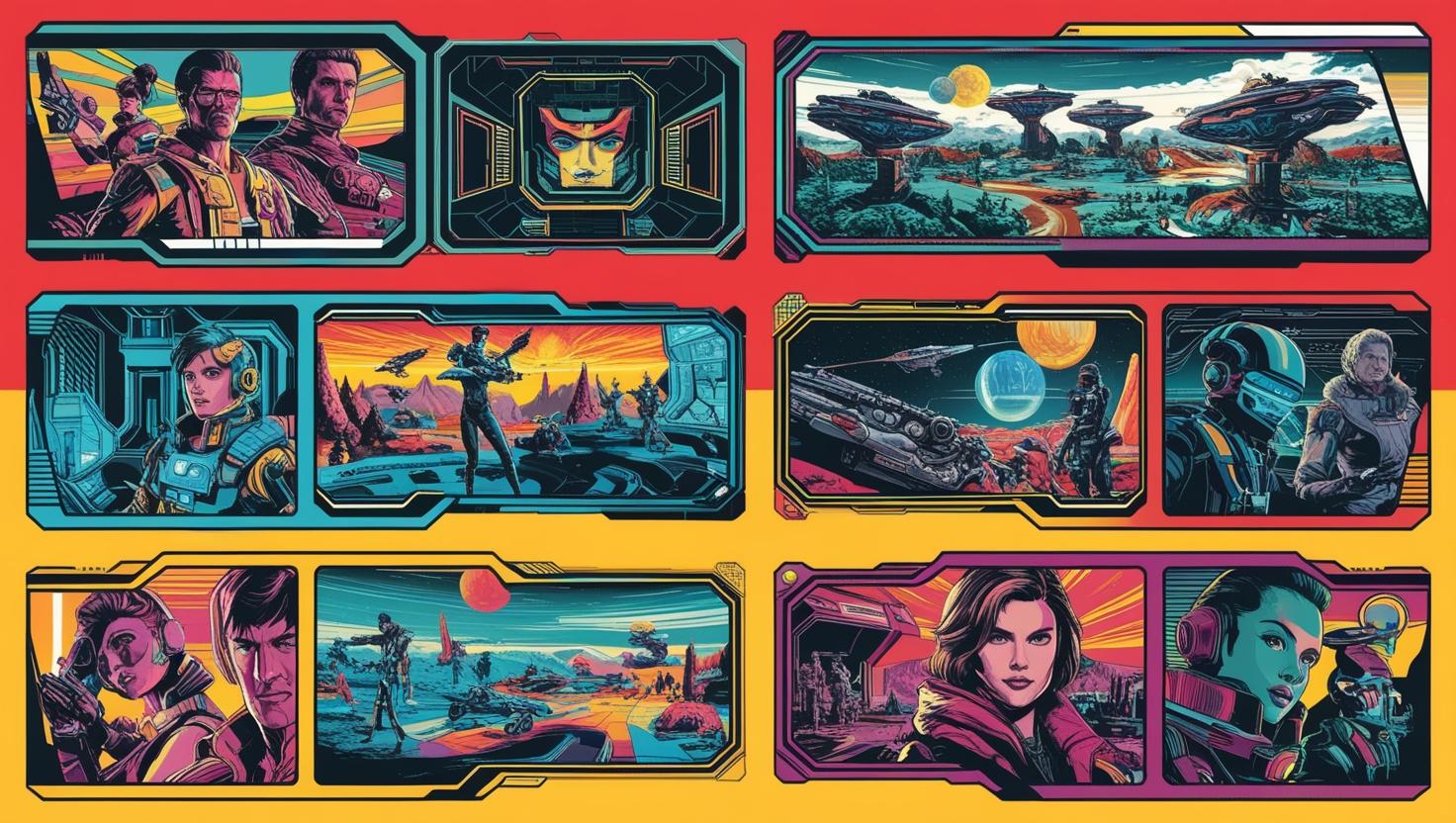Designing Addictive Gameplay Loops: The Secret to Player Retention
Have you ever wondered why some games keep you playing until 3 AM while others collect digital dust in your library? The secret lies in something game designers call gameplay loops – the repeatable activities that form the core of player experience. Today, we’re breaking down how to design gameplay loops that keep players coming back for more.
What Are Gameplay Loops, Anyway?
At their simplest, gameplay loops are the actions players repeatedly perform while playing your game. Think of them as the heartbeat of your game – the consistent rhythm that keeps everything flowing.
Gameplay loops typically consist of three phases:
- Action: What the player does
- Challenge: The obstacle they face
- Reward: What they get for succeeding
According to industry data, games with well-designed loops see 68% higher player retention rates in the first month compared to games with poorly defined loops.
The Three Levels of Gameplay Loops
Not all gameplay loops are created equal. Let’s break them down:
1. Core Loops (Micro)
These are the moment-to-moment activities players perform constantly.
Examples:
- Shooters: Aim → Shoot → Eliminate → Repeat
- Match-3: Match tiles → Clear board → Get points → Repeat
- RPGs: Battle enemies → Gain experience → Level up → Repeat
Quick Tip: Your core loop should be completable in 30 seconds to 3 minutes. Data shows that loops in this range maximize the “just one more” effect that keeps players engaged.
2. Progression Loops (Meta)
These loops track player advancement over multiple play sessions.
Examples:
- Completing missions to unlock new areas
- Collecting resources to upgrade abilities
- Building relationships with NPCs to unlock new storylines
Did you know? Games with clear progression loops see an average 43% increase in session length compared to those without structured progression.
3. Aspiration Loops (Macro)
These represent the overarching goals that motivate long-term play.
Examples:
- Becoming the strongest player on the leaderboard
- Completing all achievements
- Mastering all game mechanics
- Discovering 100% of the game world
The Psychology Behind Addictive Gameplay
What makes players keep coming back? Research has identified several key psychological triggers:
- Variable Rewards: Unpredictable rewards trigger more dopamine than predictable ones
- Loss Aversion: Players hate losing progress or advantages they’ve gained
- Sunk Cost Fallacy: The more time invested, the harder it is to walk away
- Completion Principle: Humans have a natural desire to complete unfinished tasks
- Social Proof: Seeing others succeed motivates our own participation
5 Elements of Irresistible Gameplay Loops
1. Perfect Difficulty Balance
Players quit when games are too hard or too easy. The sweet spot? Challenging but achievable.
The Data: Games that dynamically adjust difficulty based on player performance see 27% less churn than those with static difficulty.
Consider implementing:
- Difficulty that scales with player skill
- Optional challenges for advanced players
- Multiple paths to success
For sci-fi games like those 24-Players might develop, consider how difficulty might scale with technological advancement or alien environments. Perhaps early missions on Earth have lower stakes than later missions in deep space.
2. Meaningful Rewards
Players need to feel their efforts are worthwhile. Rewards should be:
- Visible: Players should see what they’re working toward
- Valuable: Rewards should meaningfully impact gameplay
- Varied: Mix of cosmetic, functional, and progression rewards
Reward Structure by Game Type:
Game TypeEffective Reward TypesActionNew abilities, weaponsStrategyNew units, tech treesRPGCharacter customization, story progressionPuzzleNew mechanics, levels
3. Clear Feedback Systems
Players need to understand what’s happening and why it matters.
Effective feedback includes:
- Visual cues (flashes, particles, animations)
- Audio feedback (success sounds, failure indicators)
- Haptic feedback when available
- Numeric indicators (damage numbers, scores, timers)
Pro Tip: According to UX research, players respond to feedback 220ms faster when multiple sensory channels are used.
4. Satisfying Progression Pacing
The rhythm of advancement matters tremendously.
The Ideal Progression Curve:
- Early rewards should come quickly (every 5-10 minutes)
- Mid-game rewards can slow down (every 30-60 minutes)
- Late-game rewards should deliver higher value but take longer
Player Drop-off Data:
- 43% of players quit if no meaningful progression occurs within first 10 minutes
- 75% of mobile players never return after day one if they don’t reach a “milestone moment”
For sci-fi games, consider how progression might tie into narrative elements like advancing technology, exploring new star systems, or unlocking alien capabilities.
5. Social Engagement
Even single-player games benefit from social elements:
- Leaderboards create competition
- Guilds/clans foster belonging
- Trading systems encourage cooperation
- User-generated content expands replayability
The Numbers: Games with social features show 300% higher retention rates than purely single-player experiences.
Balancing Addiction and Ethics
While creating engaging gameplay loops is essential, ethical considerations matter too. Avoid:
- Exploitative Monetization: Design for fun first, monetization second
- Manipulative Timers: Use time limits to enhance gameplay, not force payments
- Excessive Grinding: Repetition should be enjoyable, not tedious
- Pay-to-Win Mechanics: Keep competition fair regardless of spending
Industry Shift: Games focusing on ethical engagement see 22% higher lifetime player value than those using aggressive monetization tactics.
Crafting Your First Gameplay Loop: A Simple Framework
Ready to design your own addictive gameplay loop? Follow these steps:
- Define Your Core Action: What will players do most often?
- Establish Clear Challenges: What stands in their way?
- Create Meaningful Rewards: What do players gain from success?
- Add Progression Elements: How do players advance over time?
- Incorporate Social Features: How can players interact with others?
- Test and Refine: Gather feedback and iterate
Sci-Fi Game Loop Examples
Since 24-Players is focusing on sci-fi games, here are some genre-specific loop ideas:
- Space Exploration: Discover → Map → Extract Resources → Upgrade Ship → Discover New Regions
- Alien Ecosystem: Study Creatures → Learn Behaviors → Adapt Technology → Interact With New Species
- Future Combat: Analyze Enemy Tech → Develop Countermeasures → Engage → Salvage Advanced Components
Conclusion: The Loop Never Ends
Creating addictive gameplay loops isn’t about manipulating players – it’s about crafting experiences that are genuinely rewarding and worth returning to. The best games respect player time while delivering consistent moments of challenge and triumph.
By focusing on balanced difficulty, meaningful rewards, clear feedback, satisfying progression, and social engagement, you’ll be well on your way to designing games that players can’t put down.
Remember: the most successful games aren’t just played – they’re returned to again and again because the core experience is intrinsically satisfying.
What gameplay loops have kept YOU playing until the wee hours? Share your thoughts in the comments below!
This post was created for 24-Players, an emerging sci-fi game development studio. Follow us for more game design insights and updates on our upcoming projects!


Leave a Reply